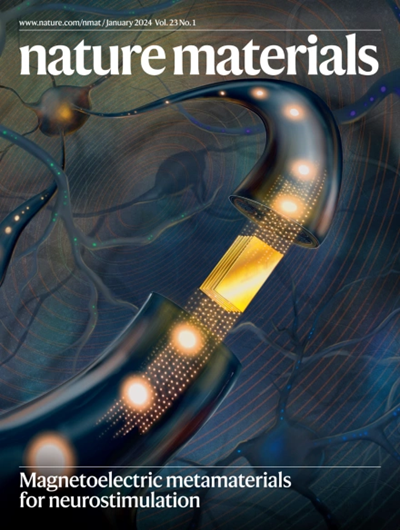Drawing boundaries between feasible and unfeasible zeolite intergrowths using high-throughput computational screening with synthesis validation.
IF 38.5
1区 材料科学
Q1 CHEMISTRY, PHYSICAL
引用次数: 0
Abstract
Zeolites are a class of porous crystalline silicate-based materials with applications such as catalysis and separation. Zeolite intergrowths can have superior performance compared with conventional single-phase zeolites in these applications. This study develops a computational workflow to evaluate ~1.03 trillion atomistic structures to identify promising zeolite intergrowths through geometrical analysis and atomistic simulations. We find that interfacial energy is an excellent descriptor to distinguish hydrothermally synthesized zeolite intergrowths from the others, showing almost-perfect classification performance (area under the curve of 0.995). Computational screening workflow saves 100% of hydrothermally synthesized zeolite pairs and successfully rejects 99.3% of hypothetical pairs. Network analyses reveal that hypothetical pairs comparable to experimentally proven ones show substantial topological and chemical similarities, although such information is not directly used in the screening workflow. One of the hypothetical candidates that passed the criteria is experimentally realized by direct and seed-assisted hydrothermal syntheses, thereby broadening the applicable scope of zeolite intergrowths to zincosilicates with three and nine rings.利用高通量计算筛选和合成验证,在可行和不可行的沸石共生生长之间划定界限。
沸石是一类多孔晶体硅酸盐基材料,具有催化和分离等应用。在这些应用中,与传统的单相沸石相比,沸石互生物具有更优越的性能。本研究开发了一个计算工作流,通过几何分析和原子模拟来评估约1.03万亿原子结构,以确定有前途的沸石互生结构。我们发现界面能是区分水热合成的沸石共生体与其他沸石共生体的一个很好的描述符,表现出近乎完美的分类性能(曲线下面积为0.995)。计算筛选工作流程节省了100%的水热合成沸石对,并成功地拒绝了99.3%的假设对。网络分析表明,假设的配对与实验证明的配对具有相当的拓扑和化学相似性,尽管这些信息不直接用于筛选工作流程。通过直接和种子辅助水热合成实验实现了其中一种假设候选物,从而将沸石互生物的适用范围扩大到三环和九环硅酸锌。
本文章由计算机程序翻译,如有差异,请以英文原文为准。
求助全文
约1分钟内获得全文
求助全文
来源期刊

Nature Materials
工程技术-材料科学:综合
CiteScore
62.20
自引率
0.70%
发文量
221
审稿时长
3.2 months
期刊介绍:
Nature Materials is a monthly multi-disciplinary journal aimed at bringing together cutting-edge research across the entire spectrum of materials science and engineering. It covers all applied and fundamental aspects of the synthesis/processing, structure/composition, properties, and performance of materials. The journal recognizes that materials research has an increasing impact on classical disciplines such as physics, chemistry, and biology.
Additionally, Nature Materials provides a forum for the development of a common identity among materials scientists and encourages interdisciplinary collaboration. It takes an integrated and balanced approach to all areas of materials research, fostering the exchange of ideas between scientists involved in different disciplines.
Nature Materials is an invaluable resource for scientists in academia and industry who are active in discovering and developing materials and materials-related concepts. It offers engaging and informative papers of exceptional significance and quality, with the aim of influencing the development of society in the future.
 求助内容:
求助内容: 应助结果提醒方式:
应助结果提醒方式:


